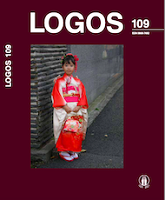Daugiajuslės architektūros link: Juhani Pallasmaa ir dirbtinės aplinkos fenomenologija
Towards Multisensory Architecture: Juhani Pallasmaa and Phenomenology of the Built Environment
Author(s): Almantas SamalavičiusSubject(s): Architecture, Environmental interactions, Phenomenology
Published by: Visuomeninė organizacija »LOGOS«
Keywords: Phenomenology; architecture; senses; occularocentrism; Juhani Pallasmaa;
Summary/Abstract: The article deals with the advancement of phenomenology of aarchitecture and multisensorial perspective and the impact of Juhani Pallasmaa on the multisensorial approach in architectural theory and design. While analyzing the architectural and intellectual contexts in which phenomenological perspective of architecture was produced the author shows that phenomenology was entering architecture gradually, through the works of Steen Eiler Rasmussen and Christian Norberg-Schulz as well as a number of other thinkers who had an architectural background. It is argued that despite of the fact that Norberg-Schulz was influenced mostly by Martin Heidegger, meanwhile Pallasmaa - by Maurice Merleau-Ponty, they both have advanced phenomenological view of architecture. It is suggested that Pallasmaa has not only played an important part in shaping current philosophical concerns about architecture and strengthening positions of phenomenological inquiry in architectural discourse but also questioned the present hierarchy of senses domination of vision in creation and experience of architecture and offered a far-reaching and more prospective multi-sensory approach toward the built environment.
Journal: LOGOS - A Journal of Religion, Philosophy, Comparative Cultural Studies and Art
- Issue Year: 2021
- Issue No: 109
- Page Range: 142-152
- Page Count: 11
- Language: Lithuanian

